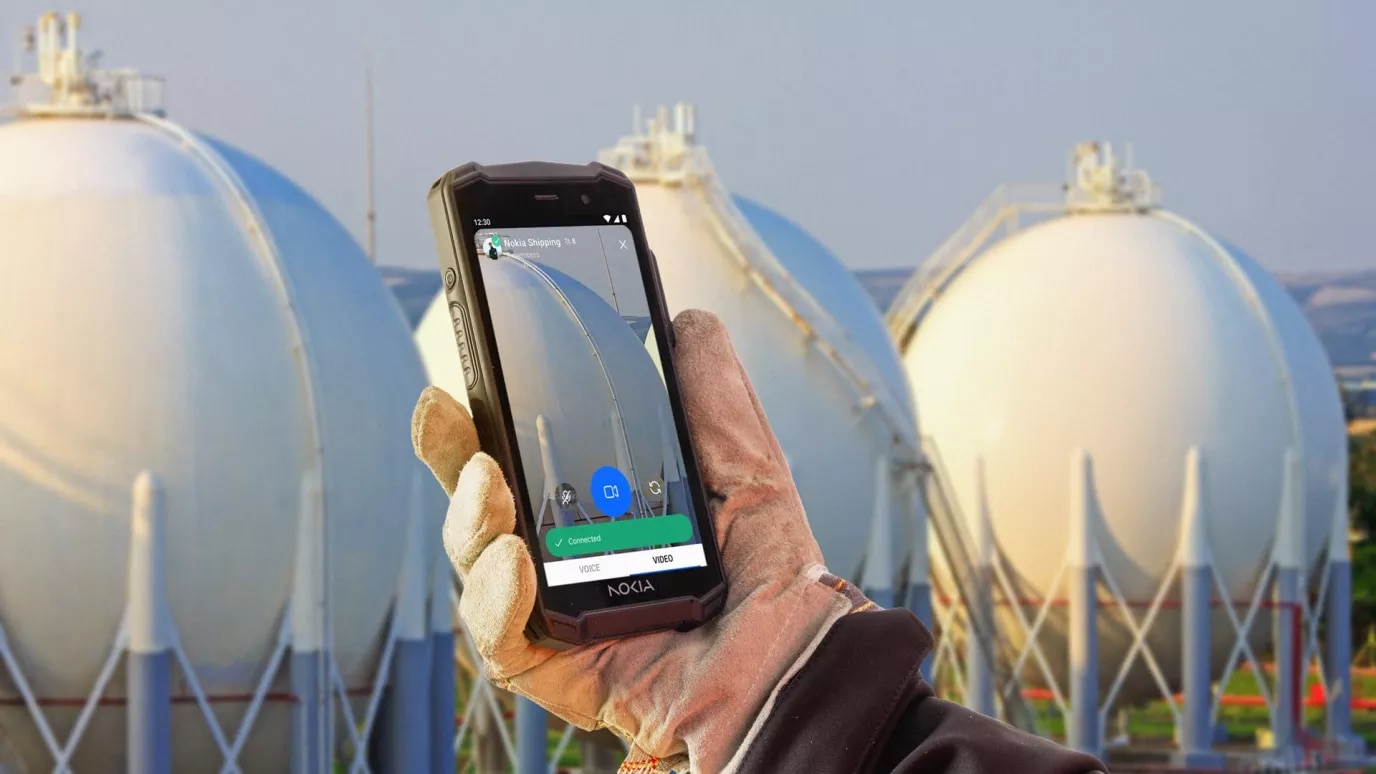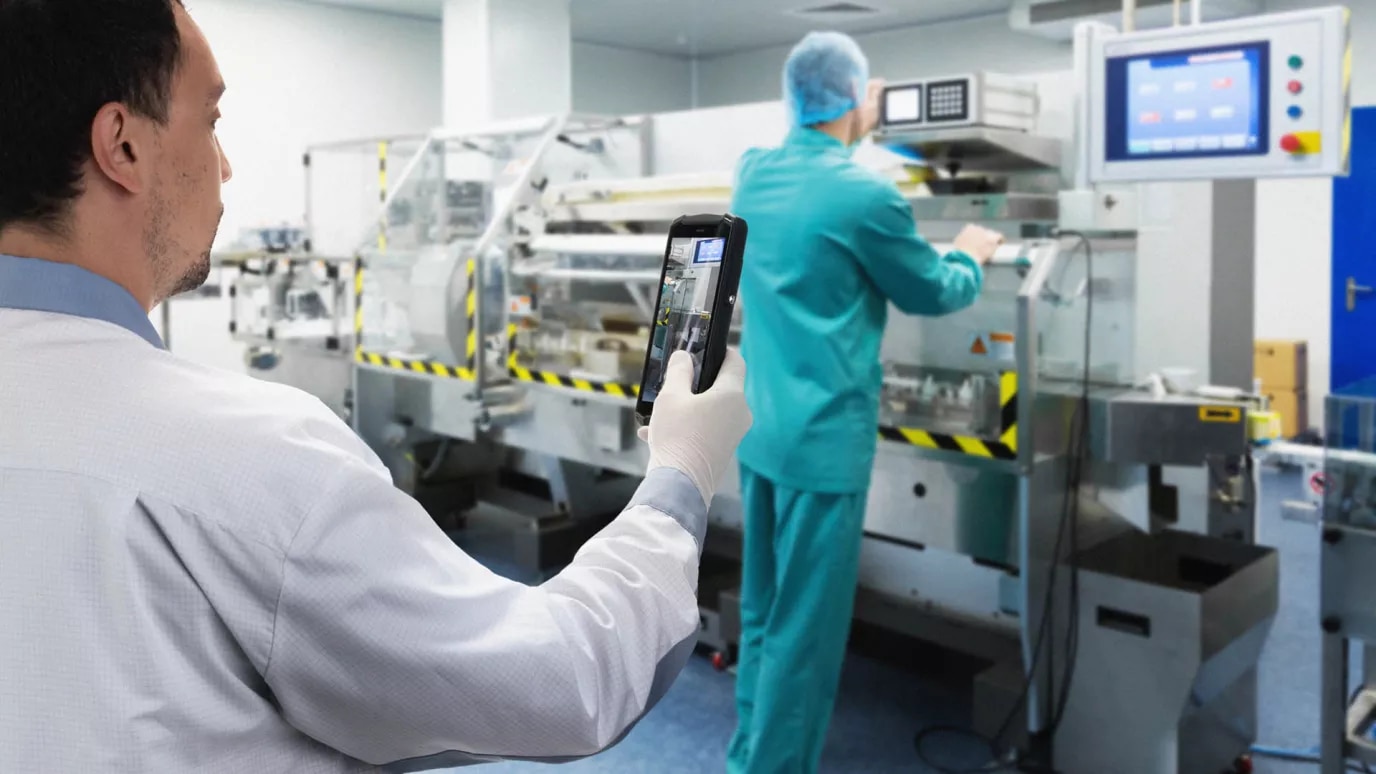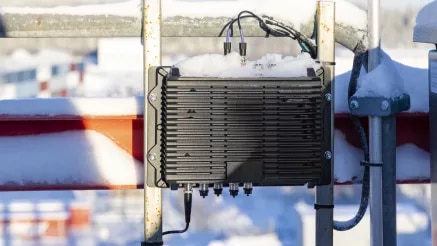Device software
Why connected workers need applications and devices for communication and safety
To assist your workers as they go about their daily tasks, they need both smart devices and relevant use-case specific software loaded on them. The Nokia enterprise portfolio incorporates a range of options and combinations that are particularly well suited for industrial customers. All these devices and applications benefit from underlying private wireless connectivity as well as Nokia Mission Critical Industrial Edge (MXIE). Together they form the Nokia one platform for industrial digitalization.
Handhelds are the primary enablers for communication and safety apps
Nokia Industrial 5G handhelds are ruggedized for operation in harsh industrial environments and benefit from large customizable buttons. They can be used with or without personal protection equipment (PPE) and accessories.
EX-protected 5G phones from i.safe MOBILE are integrated with Nokia Private wireless networks and applications for use in hazardous environments (zone 1 and 2).
Mission critical applications for communication, like Nokia Team Comms, enable your employees to communicate with or without video and send messages in private wireless environments. The SOS buttons make it easier for them to place a call and get help fast during an emergency. Combining the acceleration sensor, gyroscope and GPS in our 5G Industrial phones with applications like Portalify SmartView or Secapp you can further increase worker safety in lone worker scenarios.
Manage your Industrial devices holistically to improve productivity
The prime functionality of a Nokia Industrial device is to connect people and machines, including PLCs and sensors. But by combining them with suitable applications, such as Nokia Industrial device management and Nokia Network Digital Twin, you can increase worker efficiency and productivity and unlock compelling Industry 4.0 use cases.
Nokia Team Comms and other worker collaboration applications can be installed by users from your operating system vendor store, depending on compatibility between the device and application. There is, however, a more efficient way to deploy applications in enterprise settings using device management. That can be used to manage both IoT and smart devices to ensure that the latest security patches are installed, they are properly configured and have geofences defined if your security protocols require this.
As Nokia Industrial IoT devices are switched on, they will automatically connect to Nokia Industrial device management – IoT. Nokia Industrial device management – EMM enables easy onboarding of handhelds with most operating systems supported.
Industrial devices sense network health in real-time supporting network monitoring
Nokia Industrial IoT devices automatically send real-time telemetry to the Nokia Network Digital Twin KPI engine for analysis and display on the dashboard. The application, installed on Android 11+ devices, turns these phones into network sensing devices. 30+ KPIs are populated on the dashboard and when pre-defined thresholds are breached alerts are triggered. This allows your teams to run tests and further analysis to identify the root cause of network issues.
Combine a mix of connectivity technologies - including legacy Wi-Fi - into a single, optimized and highly reliable wireless connectivity system
Nokia MX Boost lets you combine multiple radio technologies and spectrum to benefit from reliable, high-performance connectivity for your business- and mission-critical industrial applications. Intelligent algorithms and real-time link testing enable you to operate MX Boost in one of three modes based on the needs of the application you want to support. Whether your application demands higher capacity, very low latency and reliability, or requires a smooth handover, MX Boost addresses these demands through its aggregation, replication and mobility modes, respectively.




